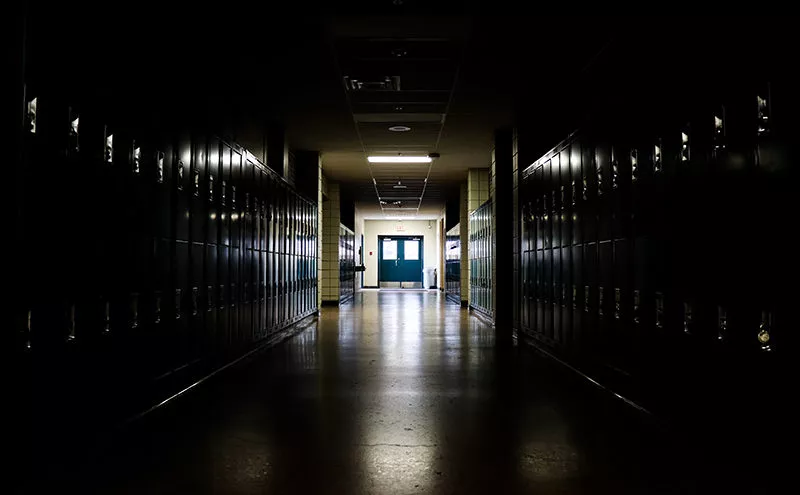Education advocates have succeeded in urging federal legislators in the U.S. House of Representatives to take the first step in protecting public education from the financial turmoil wrought by the coronavirus pandemic.
Today, the U.S. House passed the HEROES Act (Health and Economic Recovery Omnibus Emergency Solutions), a $3 trillion proposal to stabilize the economy that recognizes the critical role of the public school system.
The hallmark of the bill is $915 billion in relief for states, localities, territories, and tribes to pay vital workers such as first responders, health workers, and educators who are at risk of losing jobs from massive budget shortfalls. There is $90 billion specifically to stabilize funding for K-12 and higher education.
Now, the bill goes to the Senate. Unless they act, credible estimates indicate that public schools could face budget reductions anywhere from 25 to 35 percent.
“Our governor said early on that we could be looking at 20 percent cuts to school budgets next year,” says Phil Hayes, vice president of Ohio’s Columbus Education Association who for years taught high school social studies.
“We know that with cuts that deep, districts are going to lose educators. And that means fewer services for our students at a time when they will need more services, not less,” Hayes said.
“How are we going to meet even greater needs among students with fewer educators and less resources?”
The crisis yet to come
Every statistic related to the cratering of the economy is terrifying.
At least 36.5 million Americans are out of work, the highest rate since the Great Depression. Lost jobs and business closures have decimated state revenues; those losses could get as bad as $650 billion over the next three years, according to the Center on Budget and Policy Priorities.
Though the $30 billion Congress dedicated to K-12 and higher education when it passed the CARES Act last month was a step in the right direction, it won’t begin to cover such losses.
Even a 15 percent cut to education budgets could eliminate as many as 320,000 teaching jobs according to an analysis by the Learning Policy Institute. The lead researcher acknowledged that’s a conservative figure, and the reality is likely to be far worse.
We know from past experience that those job cuts will not be equally felt. Poorer districts that rely more heavily on state aid, will be hit the hardest.
In Michigan, the chair of the state senate’s education committee has already warned of a possible 25 percent cut to school budgets. Michigan is one of a dozen states that never fully recovered from the recession that began more than a decade ago.

As a 20-year veteran educator from Grand Rapids, math teacher Wendy Winston knows what it’s like to work year after year without all the resources students need.
“Instead of decreasing funding for public education, we really need to increase it,” Winston said during a virtual conference on education organized by the Democratic National Committee.
Whether students are learning remotely or in school buildings, their needs will be greater in the wake of the pandemic, she said.
“We need to put more money into support staff, like custodial and maintenance. We need more funding for mental health resources—social workers, guidance counselors. We need to lower class sizes, and we need to deal with trauma.”
Where cuts will take the greatest toll
Winston said many of her students lack the devices and internet access they need to participate fully in remote learning. Some access lessons on cell phones, with only tiny screens and no keyboard to work with.

“That’s a problem we’ve been dealing with for many years, it’s just being expanded right now and it’s visible now with remote learning,” Winston said.
Phil Hayes of Ohio can relate.
“What really concerns me is that some of our most vulnerable students—special education students, ELL students, students in poverty—do not have equal access in this time that we’re doing distance learning,” says Hayes.
His local, the Columbus Education Association, surveyed its membership in March and April regarding student engagement during school building closures. According to respondents, only 54 percent of Columbus students have participated in online learning. Participation rates were lower for special needs students (46%) and English Language Learners (35%).
“Our broken school funding model leaves districts like ours squeezed for resources for the students who need them the most,” said CEA President John Coneglio in a statement. “This unprecedented crisis has further exposed these fault lines and highlights the need to redouble our fight for educational equity.”
The National Education Association has taken on this specific aspect of the digital divide known as the “homework gap,” pushing for $4 billion in dedicated funding to address it nationally.
Fighting for the future
Melanie Buchanan is a middle school math teacher from Nashville, who teaches in a neighboring district.
In a state that relies heavily on sales tax to fund education, she fears what budget cuts could mean for public schools without sufficient stabilization funding from Congress.
“What will our work look like in the fall?” Buchanan wonders. “Will we be teaching in shifts? If we cut educator jobs and then ask teachers to do double duty, it’s going to be nearly impossible for us to be there to support our own families.”
She is in a middle-class district and her students have one-to-one technology. But there is still a pocket of kids who don’t have internet access at home—and some who have seemingly disappeared.
“Of the 75 students that I teach, there are six that I haven’t heard from in nine weeks,” she says. She is deeply worried about their welfare, as e-mails and calls to parents go unanswered.
“You think of all those kids who come to school for access to learning and technology, but also access to regular meals and support from adults who care about them,” says Buchanan.
“We are trying so hard to connect with each and every family we can, but we need our legislators to do everything they can to help us.”

